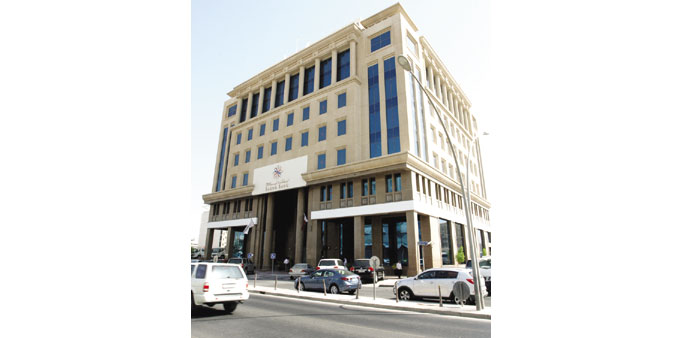Barwa Bank has been growing rapidly from a small base despite its limited history and small distribution network, says Moody’s.
By Santhosh V Perumal/Business Reporter
Barwa Bank, Qatar’s newest Islamic bank in which government is a majority owner, has found its niche in the country’s growing Islamic banking sector, benefiting from Qatar’s strong economy and favourable operating environment, according to global credit rating agency Moody’s.
Highlighting that as such, much of the associated infrastructure development will still continue, Moody’s said it expects public spending to remain high (around $182bn by 2018) despite low oil prices, supporting non-hydrocarbon economic growth of around 11% a year for the next 12-18 months.
“Continued high public spending will continue to create further business opportunities for local banks, particularly those with well-established government links like Barwa,” Arif Bekiroglu, Moody’s assistant vice-president and analyst, said.
Furthermore, he said Barwa will benefit from regulators’ policies, which prohibit conventional financial institutions operating Shariah-compliant banking windows and reduce the competition for a fast-growing customer segment.
Finding a new niche in Qatar’s growing Islamic sector, Moody’s said Barwa Bank has been growing rapidly from a small base despite its limited history and small distribution network. Barwa’s loan book grew 19% in 2014 compared with 13% for the system. Moody’s expects it to grow by 10%-15% in 2015.
Nevertheless, it said the bank’s asset quality will likely remain stable over the next 12 to 18 months, with any weakening in the credit quality of borrowers to be limited by the supportive operating environment.
Similar to many other Qatari banks, Barwa is highly dependent on government deposits for funding, leaving the bank “vulnerable” to changes in the government’s balance sheet and spending needs, it added.
“In anticipation of reduced liquidity, Barwa is seeking to expand its retail franchise,” Bekiroglu said.
“While these efforts should improve the diversity of its deposit base, the market is very competitive and thus the bank may not be able to fully offset declines in government-related deposits and increasingly rely on market funds, which makes its profile more confidence sensitive,” he added. Barwa Bank’s credit profile is also supported by very strong capitalisation (almost 18% ratio of tangible common equity ratio to risk-weighted assets), sustained by robust internal capital generation capacity (net income over tangible assets trending up to 1.9% at year-end 2014).
“Additionally, we assess that its ultimate key shareholder, the government of Qatar, has a strong capacity and willingness to provide support to the bank in times of stress, which provides added protection for creditors,” Moody’s said in the report.
Asserting that Qatar’s strong economy and supportive operating environment will underpin lending growth, it said “we expect Qatar’s real GDP (gross domestic product) to expand 5.1% in 2015 and 5.3% in 2016, despite the current low oil price environment due to continued public expenditure.”
Substantive government resources (147% of GDP) and the country’s low fiscal break-even oil price ($59 per barrel for 2015) will continue to support such countercyclical spending policies and hence maintain economic expansion, it forecasted.
Continued spending will continue to create corporate lending opportunities for the local banks, it said, expecting domestic credit to grow 10%-15% in 2015 (down from a compound annual growth rate of 19% during 2009-14 period) and a stable inflation rate of around 3%.

